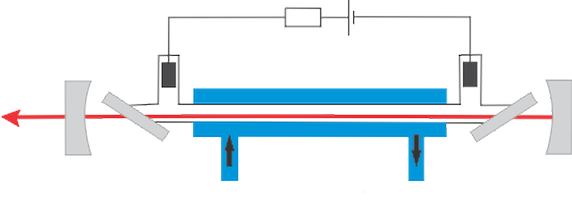CO2 Lasers - LOGILASE website
Main menu:
- HOME
- PRODUCTS
-
SPECIFICATIONS
- CO2 Lasers
- Fiber Laser Cutting
- Fiber Laser Marking
- LASER EDUCATION
- VIDEO SHOWCASE
- SERVICES & WARRANTY
- CONTACT US
CO2 Lasers:
The CO2 laser (carbon dioxide laser) is a laser based on a gas mixture as the gain medium, which contains carbon dioxide (CO2), helium (He), nitrogen (N2), and possibly some hydrogen (H2), water vapor and/or xenon (Xe). Such a laser is electrically pumped via a gas discharge, which can be operated with DC current, with AC current (e.g. 20–50 kHz) or in the radio frequency (RF) domain. Nitrogen molecules are excited by the discharge into a metastable vibrational level and transfer their excitation energy to the CO2 molecules when colliding with them. Helium serves to depopulate the lower laser level and to remove the heat. Other constituents such as hydrogen or water vapor can help (particularly in sealed-

Figure 1: Schematic setup of a sealed-
The gas tube has Brewster windows and is water-